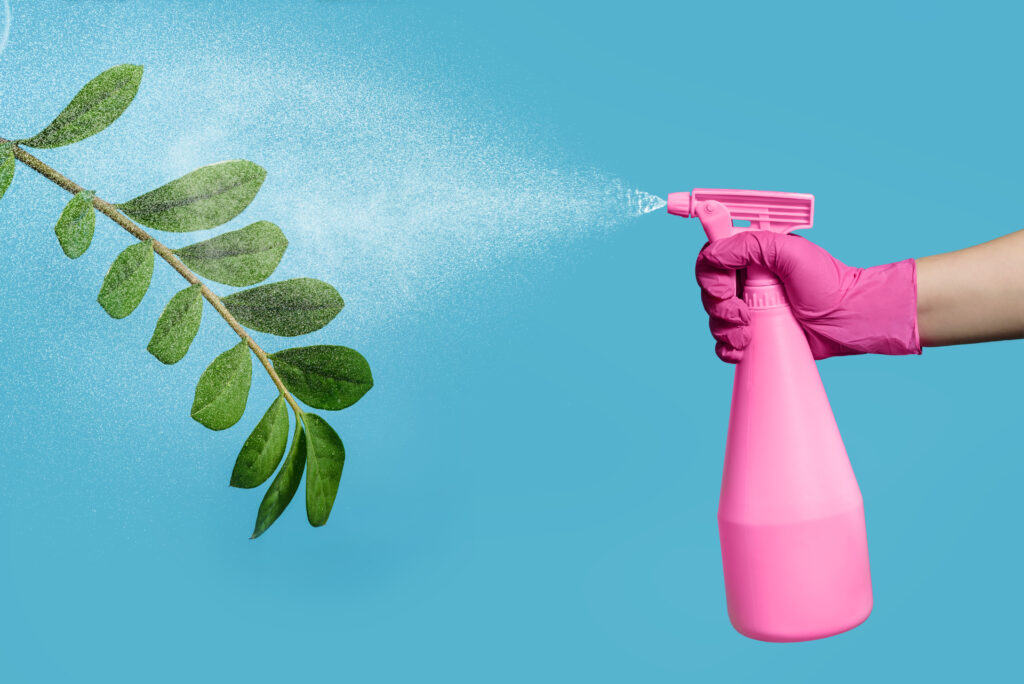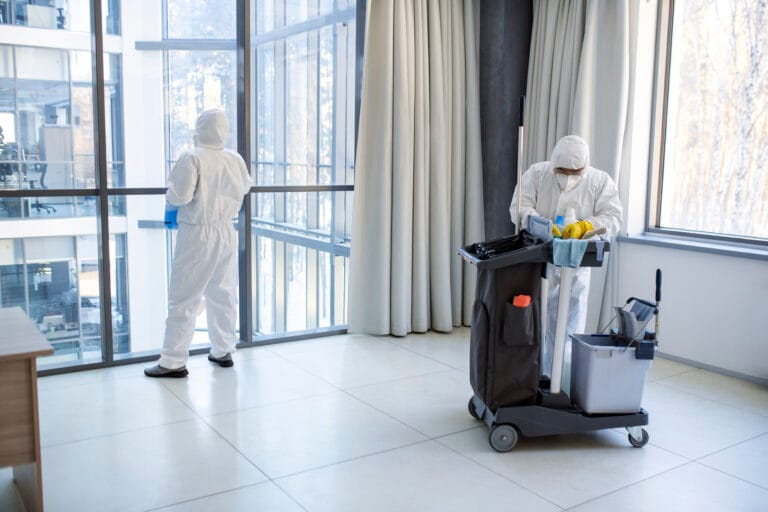Introduction to Green Cleaning in Janitorial Services
What is Green Cleaning?
Green cleaning refers to the use of environmentally friendly cleaning products and methods that minimize harm to human health and the environment. This practice emphasizes biodegradable, non-toxic substances and sustainable cleaning techniques that effectively remove dirt and germs without leaving harmful residues. Green cleaning is becoming increasingly popular as organizations recognize its potential not only to improve indoor air quality but also to contribute to the overall well-being of employees and clients alike. By choosing green cleaning products, businesses can demonstrate a commitment to sustainability and social responsibility.

Importance of Sustainable Practices in Cleaning
In today’s world, it is essential for organizations to adopt sustainable practices in janitorial services. The importance of sustainable cleaning goes beyond compliance with regulations; it also reflects a corporate ethos that values health, safety, and environmental stewardship. Implementing green cleaning methods can lead to reduced exposure to hazardous substances for both cleaning staff and building occupants. Consequently, this contributes to a healthier work environment, which in turn enhances employee productivity and morale. Furthermore, adopting green cleaning practices can also help businesses save on costs associated with healthcare and absenteeism due to illness. Ultimately, as customers become more environmentally conscious, they are likely to favor companies that prioritize eco-friendly practices. Embracing green cleaning in janitorial services can therefore serve as a valuable differentiator in a competitive landscape, showcasing a firm’s commitment to sustainability and positively impacting brand reputation.
Benefits of Green Cleaning for Health and Safety
Reduction of Harmful Chemical Exposure
Organizations that implement green cleaning practices significantly reduce the exposure of employees and clients to harmful chemicals. Traditional cleaning products often contain volatile organic compounds (VOCs) and other toxic substances that can lead to various health issues, including respiratory problems and skin irritations. By opting for environmentally friendly alternatives, businesses can effectively minimize these risks. Green cleaning products are designed to eliminate pathogens and dirt without relying on harsh chemicals, therefore ensuring the health and safety of all occupants within the facility. This commitment to health fosters a safer environment and demonstrates an organization’s dedication to employee welfare.
Improvement in Indoor Air Quality
Moreover, adopting green cleaning methods leads to substantial improvements in indoor air quality. Common cleaning agents can release harmful fumes that linger in the air long after cleaning is completed. In contrast, green cleaning products are typically low in VOCs and are often fragrance-free, which helps maintain a fresh and healthy indoor atmosphere. As employees spend a considerable amount of time indoors, improved air quality not only promotes better health but also enhances their overall comfort and productivity. Organizations that prioritize green cleaning methods signal to their clients and stakeholders a proactive approach to health and safety, fostering trust and loyalty while positively influencing the workplace environment.
Environmental Impact of Green Cleaning
Minimizing Water and Air Pollution
Implementing green cleaning practices significantly contributes to minimizing both water and air pollution. Conventional cleaning products often contain hazardous ingredients that can find their way into waterways, negatively impacting aquatic ecosystems. By choosing eco-friendly products that are biodegradable and non-toxic, organizations can lessen their impact on the environment. These products break down naturally and do not release persistent pollutants into water systems. Additionally, the use of green cleaning strategies helps to reduce the release of harmful airborne contaminants, contributing to cleaner air in the surrounding environment. This attention to environmental responsibility underscores a company’s commitment to sustainability and can improve its public image.
Decreasing Carbon Footprint
Another vital aspect of green cleaning is its capacity to decrease the carbon footprint associated with cleaning operations. Traditional cleaning products often require extensive transportation from manufacturers to end-users, contributing further to greenhouse gas emissions. In contrast, many green cleaning solutions are locally sourced and produced, thereby lowering emissions linked to distribution. Furthermore, organizations that adopt green cleaning also tend to utilize energy-efficient cleaning equipment and methods, which can lead to reduced energy consumption and less waste generated during cleaning processes. By making a commitment to green cleaning, businesses not only enhance their operational efficiency but also participate actively in the global effort to combat climate change, advocating for a healthier planet for future generations.


Cost-effectiveness of Green Cleaning
Long-term Savings on Cleaning Products
One of the significant financial advantages of adopting green cleaning practices is the potential for long-term savings on cleaning products. While eco-friendly cleaning solutions may have a higher upfront cost, their concentrated formulas often require smaller quantities for effective use, leading to less frequent purchases. This reduction in product consumption can translate into substantial cost savings over time. Furthermore, green cleaning products tend to be durable and efficient, meaning that facilities may experience lower overall maintenance costs due to less damage to surfaces and equipment caused by harsh chemicals. By investing in quality green cleaning products, organizations can not only save money but also enhance their cleaning efforts’ overall efficacy.
Reduction in Energy Consumption
Implementing green cleaning practices can also result in a significant reduction in energy consumption. Many green cleaning methods include the use of energy-efficient cleaning equipment that consumes less power compared to traditional machines. For instance, advanced vacuums equipped with energy-saving features use less electricity while providing excellent cleaning results. Additionally, green cleaning strategies often advocate for practices, such as utilizing natural sunlight and ventilation, which can lower the energy required for illumination and air conditioning. By incorporating these practices, organizations can realize considerable savings on their utility bills, making green cleaning not only an environmentally-friendly choice but also an economically sound one. Ultimately, green cleaning serves as a multi-faceted approach that enhances operational efficiency while simultaneously improving the bottom line.

Compliance with Green Building Standards
LEED Certification Requirements
Organizations aiming for LEED certification must adhere to specific green cleaning standards that are articulated by the U.S. Green Building Council. These requirements emphasize the use of environmentally-friendly cleaning products and practices that contribute to a healthier indoor environment. By integrating these standards, companies not only enhance their sustainability efforts but also showcase their commitment to corporate responsibility. Meeting LEED certification requirements can significantly bolster a company’s reputation in the market while attracting environmentally-conscious clients and employees.
Sustainable Cleaning Practices for Green Buildings
Implementing sustainable cleaning practices in green buildings is essential for preserving the integrity of eco-friendly initiatives. Effective strategies include the selection of Green Seal or Ecologo certified cleaning products that contain fewer volatile organic compounds (VOCs) and are safe for both human health and the environment. Additionally, using microfiber cloths and mops can minimize the need for chemical cleaners while maximizing dirt and allergen capture. Organizations should also conduct regular training sessions for their cleaning staff to ensure adherence to sustainable protocols. Furthermore, prioritizing routine cleaning can enhance the longevity of building materials, ultimately reducing the overall operational costs associated with repairs and replacements. A focus on sustainable cleaning not only ensures compliance with green building standards but also fosters a healthier and more productive workspace, reflecting positively on the organization as a whole. By committing to these sustainable practices, entities can effectively demonstrate their dedication to environmental stewardship while enjoying the benefits of efficiency and compliance.





